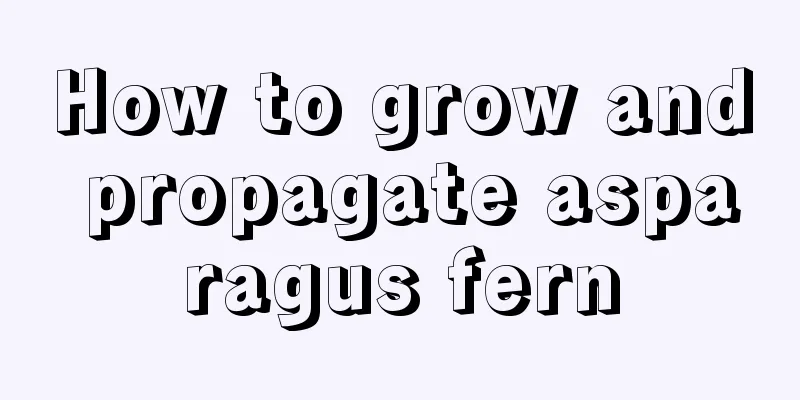Have you ever tried growing vegetables on the balcony? Let’s go with the urban vegetable farmer STYLE!

Buy seedsYou can buy it at local seed stores, agricultural supply stores, flower and bird markets, vegetable markets, gardening stores, or you can shop online. There are three main types of potted vegetables: Leafy vegetablesThe leaves of this type of vegetable are brightly colored, providing an aesthetic enjoyment that is no less than that of some flowers, and have high nutritional value. Such as colorful spinach, purple lettuce, kale, etc. Fruits and vegetablesThe fruits of this type of vegetables have strange shapes and colorful colors, including colorful peppers, miniature pumpkins, and five-finger eggplants. Fruit and vegetable dual-purposeThis type of vegetable can be eaten as a vegetable after viewing, and can also be eaten as a fruit after washing. It is very popular among young people, such as cherry tomatoes. At this time of year, you can choose lettuce, cabbage, greens, coriander, spinach, etc. Buy toolsThings you need to buy include potting containers, growing media, fertilizers and nutrients. You can also buy some equipment and pesticides for pest control. containerThere are some things to pay attention to when choosing containers. The general principle is that they should be conducive to the growth of vegetables while also being aesthetically pleasing and economical. For vegetables with large expansion and deep root systems (such as tomatoes and cucumbers), you should choose containers with large diameter and high depth. If it is leafy vegetables, you can choose containers such as boxes, troughs, and wooden barrels. Of course, if you want it to be more beautiful, you can also choose containers such as porcelain pots, purple clay pots, and even mineral water bottles can be tried. Growth substrateThe growth and development of potted vegetables are restricted by the container, and the area for the roots to absorb nutrients is limited. In order to meet the needs of vegetable growth and development as much as possible, it is best to use special substrates, such as Golden No. 3 substrate, which is available in flower and bird markets. Of course, if you want to keep it simple, you can just dig some soil. fertilizerWhen growing potted vegetables, it is necessary to prepare some fertilizer. You can buy some small packages of water-soluble fertilizers, which have instructions on fertilizer concentration, ratio, and usage stages, making them more convenient for home use. Planting tips ~ This is very importantNow is the time to start planting. Bury the seeds in the soil. If they are grown in a substrate, cover them with a layer of substrate about 0.5 cm thick after sowing. The first time you water it thoroughly, there is a little trick for the subsequent water management. Just make sure that the substrate does not fall apart when you squeeze it with your hands every day. After the seedlings emerge, water management continues in the same way, and fertilizer can be added according to the instructions of water-soluble fertilizer (generally 1000-2000 times, applied once every 4-5 days). Choose different vegetables for balconies facing different directionsSouth-facing balconyIt has full sun, plenty of sunlight and good ventilation, making it an ideal balcony for growing vegetables. Almost all vegetables grow best under full sunlight conditions, so most vegetables can be grown on a south-facing balcony all year round, such as cucumbers, bitter melon, tomatoes, green beans, day lily, apricots, mustard greens, zucchini, green peppers, lettuce, leeks, etc. In addition, aquatic vegetables such as lotus roots, water chestnuts, and water caltrops are also suitable for planting on south-facing balconies. In winter, most areas of the south-facing balcony can receive direct sunlight. By setting up simple insulation equipment, a good environment can be created for winter vegetable production. East and west facing balconiesHalf daylight is suitable for growing light-loving and shade-tolerant vegetables, such as onions, lettuce, rapeseed, leeks, loofah, coriander, radish, etc. However, the temperature on a west-facing balcony is higher in the summer when it is exposed to the sun, which can cause sunburn to some vegetables. In mild cases, the vegetables will fall off their leaves, and in severe cases, they will die. Therefore, it is best to plant climbing vegetables that are resistant to high temperatures in the corners of the balcony. In summer, you should also try to protect yourself from the strong light and radiation light reflected from the floors behind. North-facing balconyWith little to no sunlight throughout the day, the vegetable selection is minimal. You should choose shade-tolerant vegetables for planting, such as lettuce, leek, asparagus, toon, dandelion, water spinach, and wood ear vegetable. In summer, you should also try to protect yourself from the strong light and radiation light reflected from the floors behind. Which vegetables are best to grow on the balcony?Fast-growing vegetables with a short growth cycleRapeseed, green garlic, sprouts, mustard greens, bok choy, and lettuce. Vegetables with a long harvest periodTomatoes, peppers, leeks, coriander, cilantro, onions, etc. Space-saving vegetablesCarrots, radishes, lettuce, onions, ginger, coriander. Easy-to-grow vegetablesBitter melon, carrot, ginger, onion, lettuce, and bok choy. Vegetables that are not prone to insectsOnions, leeks, sweet potato leaves, ginseng grass, aloe vera, and caraway. Ten essential tools for growing vegetablesNO1: Organic fertilizerSince chemical fertilizers may pollute the environment and go against the green and healthy concept of growing vegetables at home, it is recommended that you make your own organic fertilizers. The method of making organic fertilizer is very simple. You can make use of daily waste (sesame paste, rotten vegetable leaves, rice washing water, dead grass, fallen leaves, etc.). For example, leftover sesame paste can be diluted with water and sealed for fermentation (be sure to seal it well, otherwise it will emit odor and pollute the indoor environment). When the smell of the sesame paste water becomes very light, it is fermented and can be diluted with water and directly poured into the soil. In addition, if there is a mud pond or a small river near your home, you can dig the pond mud, or wash the river sand and use it as organic fertilizer for some vegetables. NO2: Organic soilHome vegetable growing usually uses organic cultivation soil, which can be purchased at agricultural markets, and special cultivation soil can be selected according to the type of vegetables. NO3: Seedling holeOne seed per hole, easier to manage. NO4: Vegetable potPots, buckets, boxes, jars, baskets, pots and other daily utensils can be used to grow vegetables. Tuber vegetables such as potatoes can be planted in bags, onions, leeks, garlic sprouts, etc. can be planted in baking trays, and tires, sacks, etc. are also good containers for planting vegetables. NO5: Punch, seedling lifterUsed for sowing and transplanting seedlings. NO6: Small spray bottleCreate a small environment for rainfall. You don’t need a big balcony to grow vegetables, a small one is enough. NO7: Good seedsPlease go to a regular seed store to buy, good seeds can guarantee germination rate and growth. NO8: Three-piece vegetable growing tool setThe smallest size is enough for home use, it is compact and does not take up much space. NO9: LabelKeeping track of varieties and sowing times is a big help for beginners. NO10: PerseveranceHard work and persistence are the most important! You can’t harvest tomorrow what you sow today. |
<<: How to grow potatoes on the balcony
>>: Balcony vegetable growing video: pepper
Recommend
How to divide Nepenthes (with a complete list of propagation methods)
1. Division method When propagating pitcher plant...
Can blueberries be grown indoors?
Can blueberries be grown indoors? Blueberries can...
Spring sowing method
1. Time Selection The sowing method is not common...
How to fertilize boxwood
1. Fertilization at different stages Boxwood has ...
Can Jasper be hydroponically cultivated?
Can Jasper be hydroponically cultivated? Jade can...
A dying green radish and money tree was brought back to life in 3 minutes. How did she do it?
1 Save the green radish from heatstroke 1. If the...
Causes and treatments of yellowing leaves of pine needle chrysanthemum
1. Temperature influence Reason: Mesembryanthemum...
What should I do if Forsythia blooms but does not bear fruit? What is the reason for not blooming?
1. Reasons why Forsythia blooms but does not bear...
Rose cutting method and time
Rose is a plant with strong adaptability and high...
Is Christmas cactus suitable for indoor cultivation?
1. Is it suitable? Christmas cactus is suitable f...
What is the best fertilizer for passion fruit?
Passion fruit fertilization time Passion fruit sh...
Cutting method of fragrant wood
The fragrant wood can be propagated by cuttings. ...
June is the beginning of summer flowers. Which plants are in bloom?
White Orchid White orchid usually blooms twice a ...
When to plant hollyhocks
When is the best time to sow hollyhocks? Hibiscus...
Treatment of yellowing leaves of the fortune tree
The money tree is popular for its elegant posture...









